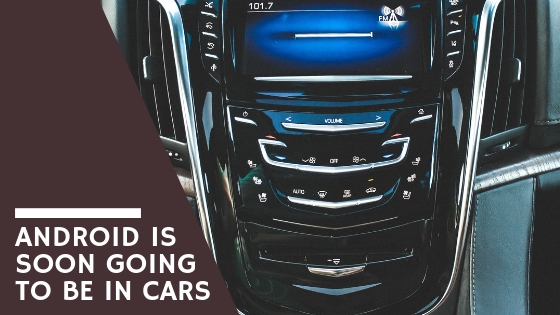We’ve seen more and more cars have the benefit of various smart devices and navigation systems built into their interfaces. It’s coming to be expected that a newer car possesses these features and makes life easier for the driver. Recently, Google announced that they’ll be adding the Android operating system into cars.
The specifics
Beginning in 2021, millions of vehicles worldwide will have Google’s Android OS as their media display. Google has partnered with one of the leaders in the car-making industry, the Renault-Nissan-Mitsubishi Alliance, to build the operating system behind their GPS and entertainment systems for vehicles. The displays provide simple navigation through Google Maps, apps via the Play Store, and voice commands using Google Assistant. Eventually, customers will interact with their vehicles hands-free using these devices.
The backstory
Just last year, Mitsubishi sold over 10 million vehicles. They are expected to exceed that number by the end of 2018. It will take three more years before Android arrives in their new cars, but the collaboration should shift those numbers considerably upwards by 2022. Google has tried to push their way into the auto industry for over ten years. However, automakers were leery about giving the tech giant access to their user data. Most auto companies consider Google as a competitor who might take advantage of the data for profit. Companies such as BMW and Mercedes-Benz who prefer to create their own GPS systems, have made it challenging to let Google in and prefer to create their own operating systems for cars.
Demand
Even though most drivers mount their cell phones on their dash and use navigation apps, the popularity for infotainment displays is still there. Most car buyers prefer to continue to use Google Maps compared to software developed by automakers, usually because Google Maps is more up-to-date than those other systems. Buttons control some systems on the screen or the steering wheel and provide feedback. Voice control is vital for everyone’s safety and allows the driver to keep their eyes on the road and hands on the wheel. In the future, car companies will incorporate gesture controls, where the driver doesn’t need to touch the screen; they can just wave their hands around. You are likely to see advertisements on your dashboard display for stuff you are driving by, for shopping, and even social networking.
The dash systems won’t only be exclusive to Google. They will still be compatible with other operating systems including Apple’s CarPlay, and iOS. Apple will also continue to develop their Intelligent Cloud for in-car use.

